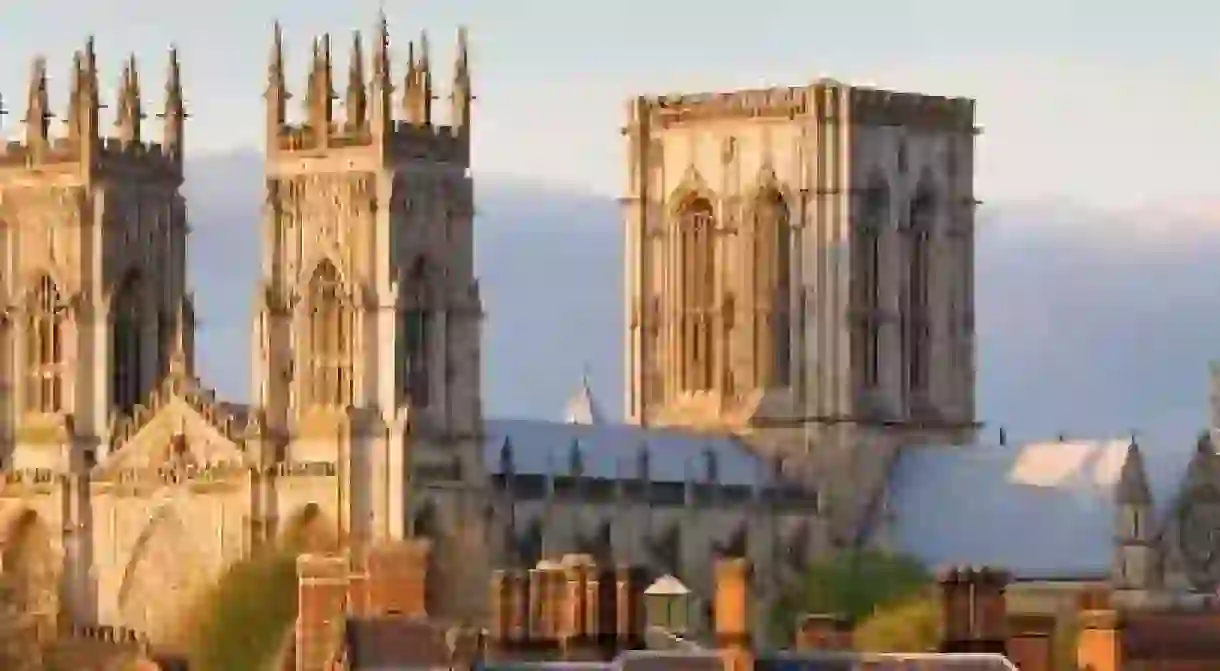The Top 7 Historical Sites In York

Despite its small size, York has played a central role throughout much of England‘s history. A walled city first founded by the Romans, its colorful historical heritage draws tourists in droves from all over the world, and thanks to careful town planning and preservation works, visitors here are offered an unparalleled and pristine glimpse into the UK of a bygone era. Boasting a majestic Gothic cathedral, medieval architecture, ancient gates and a winding river, York is undoubtedly home to some of the best historical sites in England; read on to find out more.

York Minster
Church

Otherwise known as The Cathedral and Metropolitical Church of Saint Peter in York, the York Minster is one of the largest Gothic structures in Northern Europe, and is arguably one of the greatest and best-kept cathedrals in the world. Delve into the fascinating history of the structure by paying a visit to the Undercroft, the Minster’s newest attraction which educates visitors on the building’s construction, as well as its role throughout the wars of England. Tickets to the Minster tower are also available for purchase, allowing guests to climb the lookout and enjoy outstanding views of the entire city.
Clifford's Tower
Clifford’s Tower is situated on the south side of the River Foss in York. The structure was initially constructed by William the Conqueror to help him gain control of the rebellious north of England. The castle was twice burned to the ground, but was eventually rebuilt by Henry the 3rd. The hill which elevates the tower becomes blanketed in daffodils in the spring, and a hike to the top offers brilliant panoramic views of the idyllic surrounding area. The Shambles | © Jeremy Bolwell /geograph.co.uk© PhillipC/WikiCommons
The Shambles
The Shambles is an enchanting 14th century walkway believed to have been the inspiration for Diagon Alley in J.K. Rowling’s famous Harry Potter series. The old street’s quirky but beautiful over-hanging, timber-framed buildings transport visitors into a previous time. The street was formerly home to many local butchers and this is the reason the winding walkway was previously known as ‘The Great Flesh Shambles’. The shops on the street offer a variety of goods, ranging from gifts and jewelry to tea shops and food outlets, and when ambling down the cobbled street in the direction of the Minster, it is possible to view the magnificent tower beautifully framed by the Shambles’ shop-fronts. Clifford’s Tower © Polifilo/WikiCommons
City Walls
York has, since Roman times, been defended by walls of one form or another, and there’s no better way to get a feel for the city than by taking a stroll along them. Stretching over 3.4 kilometers, they are the longest town walls in England, and it takes about two hours to walk them end to end. Various signs and information points give details about the history of the site and the surrounding areas, providing enlightening information for visitors interested in some wall walking.

St.Mary's Abbey
This eerily beautiful ruin is set in the heart of York’s verdant museum gardens. St Mary’s Abbey was once the richest in the north of England before the dissolution of the monasteries occurred, an event which resulted in its closure and eventual destruction. The remains of the Abbey and surrounding grassy areas now make for a magnificent picnic spot, and are frequented by locals and visitors alike throughout all the seasons. It is possible to go right up to the ruins with no restrictions, and as the museum gardens are a public park, entry is free. St.Mary’s Abbey | © Kaly99/WikiCommons
Merchant Adventurers' Hall
This magnificent guildhall is located approximately three minutes away from Clifford’s Tower, beside the River Foss. The architecture here, featuring an unusual combination of stone, brick and wood, makes this building’s design remarkably unique. The initial structure was built in 1375 by a religious fraternity, and it was once one of the most important buildings in the medieval city. Currently the hall is the UK’s largest timber-framed building, and it regularly hosts popular events such as markets, fairs and festivals. Merchant Adventurers’ Hall © Richard Croft/WikiCommons
Barley Hall
A structure even older than the Merchant Adventurer’s Hall, nearby Barley Hall was initially constructed by monks in 1360 and roughly 100 years later became the home to the Mayor of York. The building eventually fell into disuse and it’s physical condition deteriorated, and it was in danger of being demolished so the space could be used to build offices and apartments. Thankfully the Hall was saved by the York Arcaelogical Trust in 1987, an organisation which originally intended for the hall to be turned into a museum, however it stands now as a Grade II listed building.













